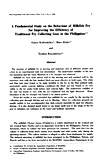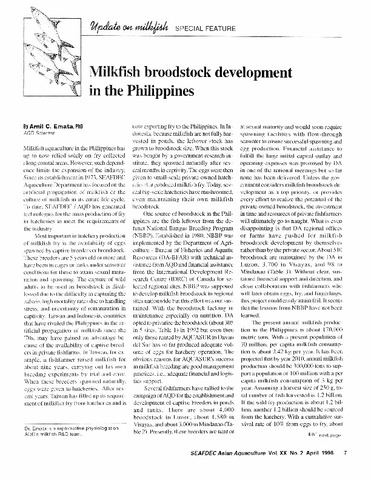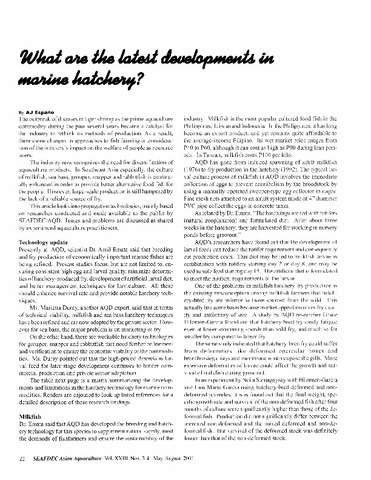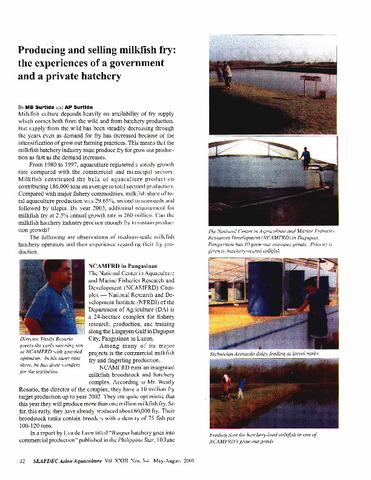A fundamental study on the behavior of milkfish fry for improving the efficiency of traditional fry collecting gear in the Philippines
Share
Abstract
The reaction of milkfish fry to miving and stationary nets of different meshes and colors in an experimental tank was determined. The underwater visibility of the nets saw measured and the water filtration in a fry-sweeper was observed.
Milkfish fry were both driven well by the moving nets and retained well by the stationary nets, with the fine-meshed black net most effective in both cases. The white and blue nets were found to be quite invisible to the fry in the blue-painted tank, particularly under contour lighting conditions; the black net was found to be very visible to the fry under both surface and contour light. The underwater visibility of the nets was found to vary with the sea conditions and the light direction. Water filteration in the fry-sweeper was found to be almost perfect.
From the results, it was concluded that milkfish fry are caught by the moving fry collecting gear through driving and not by filtering. Since fry collection grounds are usually turbid, it was recommended that dark-colored materials be used for effective driving. It is also deemed much better to use larger mesh nets in the wings of the fry gear to minimize net resistance in the water and facilitate operation.
Description
Contribution No. 76 from the Aquaculture Department of SEAFDEC.
Suggested Citation
Kawamura, G., Hara, S., & Bagarinao, T. (1980). A fundamental study on the behavior of milkfish fry for improving the efficiency of traditional fry collecting gear in the Philippines. Memoirs of the Kagoshima University Research Center for the South Pacific , 1(1), 65-74. http://hdl.handle.net/10862/1091
Subject
Taxonomic term
Collections
- AQD Journal Articles [1215]
Related items
Showing items related by title, author, creator and subject.
-
Milkfish broodstock development in the Philippines
Emata, Arnil C. (Aquaculture Department, Southeast Asian Fisheries Development Center, 1998) -
What are the latest developments in marine hatchery?
Españo, A. J. (Aquaculture Department, Southeast Asian Fisheries Development Center, 2001) -
Producing and selling milkfish fry: the experiences of a government and a private hatchery
Surtida, Marilyn B.; Surtida, Augusto P. (Aquaculture Department, Southeast Asian Fisheries Development Center, 2001)






